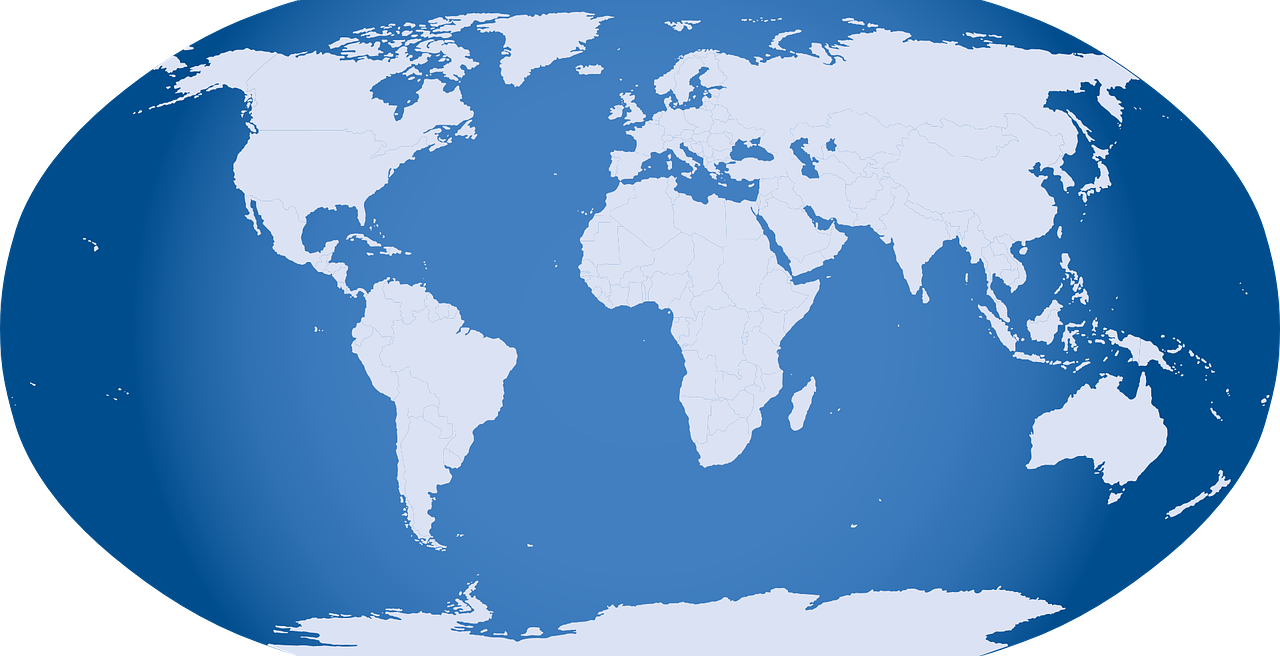Geographical research – Geography is an essential science field in which humans are involved. Geography is critical because it studies aspects related to the Earth, such as layers of soil, layers of rock, minerals, and so on. This knowledge is indeed critical because humans live on Earth. With this, humans need to know the state of the Earth.
In addition to studying the Earth, geography explores climate, weather, and everything related to the heavens and outer space. Geography is a vast subject that comprises several branches.
All aspects of the Earth will only be easily obtained by some. Some people who know geography will conduct geographic research to discover all elements on Earth and even outer space. Therefore, geographic research is fundamental to learning more about the Earth we live in today.
This article aims to provide Sinaumed with a clear understanding of geographic research and the necessary steps to take. Let’s delve into the following review to gain a better insight into the sequential steps of geographic research.
Geography Research
Geography also conducted research. These studies are called “geographical research.” Geographic research is a study conducted in the field of geography. Geography Research is a logical and scientific study. Therefore, geographic research is carried out systematically. Geographic research is carried out to achieve goals through results or solutions to geographic problems.
Therefore, some problems are mainly faced in geography before starting geographic research. On this occasion, we will learn about the steps of the geographic research method. Of course, this can be used as a guideline for those who want to do research in geography.
Unlike other research, the research phase in geography focuses on natural phenomena. In other words, formulating the problem in the study of geography contains geographical phenomena. In general, this geographical research has three characteristics: making and using maps, field observations, and identification of models from the research analysis results.
A phenomenon is an observed fact, event, or state of nature. In general, there are two primary questions about a phenomenon: what or why it occurs and where it occurs.
So, the phenomena studied in geography are geosphere phenomena. The wonder of the geosphere consists of humans, nature, and their interrelationships on the Earth’s surface. The geosphere is the hydrosphere (water layer), lithosphere (rock layer), atmosphere (air layer), biosphere (life layer including plants and animals), and the human environment (population dynamics).
Geographical Research Methods
Geographical research has many types depending on the method, form, and purpose. Based on the objectives, exploratory, descriptive, and explanatory research methods are used to obtain research data. The following is an explanation of the method.
Explorative Research
Exploratory research is research by collecting data through interviews, observation, and literature review. This research aims to develop a basis for topics that are new or unknown to people. This study examines the relationship between social and physical symptoms to obtain a quality hypothesis.
Descriptive Research
Descriptive research is further research according to exploratory research. The purpose of this study is to reveal cases of the geosphere that are following the facts. The results of descriptive research are in the form of schematic descriptions or systematic flow in solving research cases.
Explanative Research
The last is explanatory research, namely research that aims to reveal the problems of the geosphere that occur on Earth.
Geographical Research Implementation Methods
After identifying the right type of method, the next step in geographic research is broken down based on the method. Based on the method used, geographic research is divided into 3: case studies, surveys, and empirical studies.
Case studies were conducted through fieldwork and interviews. Investigations are carried out to test the truth of hypotheses or temporary conclusions. The survey results depend on the sample or samples and information from the respondent. At the same time, experiments were conducted to determine the effect a variable has on other variables. This experiment is carried out in the field or in the laboratory.
Geography Research Steps
It should be, wherever there is research, carried out with a scientific and systematic approach. Even not only in geography but also in science or the like, research needs to be guided in scientific and systematic steps. For those of you who want to do geographic research, several steps must be taken to get the results you want. Geography research steps are as follows.
Defining the ProblemIn conducting research, the first step that must be done is to choose a case. Problems occur when a gap or imbalance exists between the requirements and the actual conditions. Problems can also occur due to gaps between theory and practice or plans and implementation.
In a geographical study, there are four origins of cases; it could be based on the results of other people’s research, literature, field conditions, or availability of data, maps, and graphs. Geographical problems must contain at least three main issues: what the problem is, where did the case occur, and why did the case occur.
For example, the first point is about erosion incidents. Then in the second point, where the case occurred, for example, the location is Kali Wangan, Kedungupit, Sragen Kota District. On the third point, why did the problem occur? For example, erosion was caused due to flash floods near the location area?
- Make a problem statement.
The second step in geographic research is to formulate the problem. The formulation of this problem needs to be aligned with the actual situation. The formulation of the problem is in the form of more specific questions that will be sought for answers and the truth through data collection and research that will be carried out. However, the problem and the formulation of the problem have a close interaction because the problem is the basis for making the problem statement.
As explained in the initial paragraph, the formulation of the problem in geographic research contains facts about the scope of the geosphere. An example of a problem formulation in a geographic study is “Why do urban residents tend to experience cultural changes?” or “What factors influence the quality of Ciliwung river water?”. The answers to these questions will be sought through research.
- Determining the Research Title
The third step that must be done is to choose a research title. The title of geographic research must describe the object and subject to be studied, the location, purpose, and target of the researcher. A research title must be crucial to the research, the data must be available, and the researcher’s abilities must be affordable.
- Research Objectives
After determining the problem, formulation, problem, and research title, the next step is to determine the research objectives. The purpose of this research must be consistent with the problem you create. There are two types of research objectives: specific and general. Specific objectives are formulated in several questions in the formulation of the problem, while general objectives briefly explain what you want to achieve in the research.
- Determining Research Variables
The next step is to determine the research variables. Variables are factors or items that researchers decide to investigate and draw conclusions. There are three types of variables, including independent variables, dependent variables, and moderate variables.
Independent variables are variables that affect or trigger the next variable. The dependent variable, on the other hand, is the variable that is affected by or is the result of the independent variable. Then moderate variables are variables that strengthen or weaken the relationship between the independent and dependent variables.
In order to better understand what was conveyed above, two examples will be given below.
The first example is a physical geographical study of the distribution of landslide-prone areas, as follows.
Landslides can occur due to rainfall, vegetation cover, slope, soil type, and morphology. All of these conditions will differ in each region.
There are areas whose morphology is in the form of hills, steep slopes, and high rainfall. However, some areas have conditions that are reversed from the previous area. Well, it is these conditions that can cause the area to be prone to landslides or not.
From this first study, it can be concluded that a dependent variable is a landslide event because the landslide event was an impact or determined by other variables. At the same time, the independent variables are rainfall, vegetation cover, soil slope, soil type, and morphology.
Well, the second example will be taken from examples according to social-based geographic research, for example, regarding the effects of the development of tourist areas on the community’s economy, as follows.
The most straightforward research to do discusses the development of tourist areas on the community’s economy.
From this research, you will find several supporting factors. The first factor is transportation access to the location, such as road network and conditions. The second factor relates to the distance from the tourism location, strategic location or not. The last or third factor is the distribution of tourism spots.
In this second study, the dependent variable is people’s income in the tourism sector. Why? Because this variable is influenced or caused by the three factors mentioned above. These three factors became independent variables in the second study because they influenced or became the cause of other variables.
- Determine the theoretical basis.
Before submitting research, the next step in geographic research that you must pay attention to is choosing a theoretical basis. The goal is to strengthen your research by using theories, concepts, and definitions systematically to carry out research. All scientific research must have a theoretical basis; it is not permissible to make it. This theory has three functions, namely explaining, predicting, and controlling.
- Develop a Research Framework
The next step is to develop a research framework. The framework begins with formulating the problem and then explains the variables in the theoretical framework. The researcher will then analyze and compare the relationship between the two variables in his research to provide a frame of mind. Based on this research framework, the researcher will propose a hypothesis.
- Research Hypothesis
After doing the seven steps above, the next step is a hypothesis. The hypothesis is a temporary statement or answer to the problem that has been formulated. However, this hypothesis may change after data collection.
- Determine the population and research sample.
After preparing the hypothesis, we enter into the research process, namely determining the population and the sample to be studied. Why do you need an example? This is necessary to represent the population. The use of this sample will make the research simpler.
- Sampling Techniques
Sampling certainly must be done appropriately. There needs to be a certain technique for taking research samples.
- Data Collection Techniques
You also have to determine the data processing techniques used in the research. There are a lot of data processing techniques. This is done so that research is more accurate.
- Data Processing
After the samples and data are obtained, the next process is data processing. Research data processing can use a particular software or use other supporting tools.


